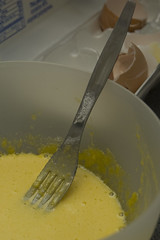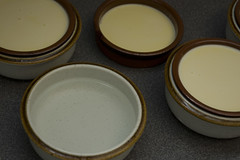
There's something magical about how one raw steel cut oat can absorb four times its volume in water.
Given my recent investment in oatmeal, I've uncovered a few gems and factoids that I would like to share with you, which can be summed up in the sentence: Oatmeal is whole grain hulled groats of oats, traditionally cooked with a spurtle.
What are oats? | Lets start where I started - at the basics. Oats (Avena sativa) come from a cereal grain, which is just a fancy way of saying that they are grown for their seed. Oats are grown all over the world - almost 25 million metric tons a year according to the UN FAO. Like most of our grains, the majority of oats grown goes directly to livestock.
How is oatmeal made from oats? | All oatmeal is made from groats of oats, the shelled, or hulled, grain that comes from the oat crop. Steel-cut means what it says - the grains are then cut into smaller pieces. Rolled oats are first flattened then steamed to decrease cooking time. I'm not going to comment about the nutritional value of one over the other. Both are awesome nutritionally - to find out more, check out what alpha has to say.

Gem #1: The art of oatmeal requires a spurtle! No - it's not a pokemon! It's a cooking utensil that deserves its own drawer. It's definitely going on my wishlist. You can buy them hand-made online, or find out what food bloggers have to say. With a little marketing, Crate and Barrel could bring these back!
Gem #2: This will get its own post in the near future, but you can make savory oatmeal! For too long, oatmeal has been banned to the constrictive, sweetened world of breakfast. But, like any cereal grain, it's fine for any meal. I tried cooking dinner with oatmeal for the first time a week ago - it was fantastic! The cooking experience was surreal - I cringed as I added garlic and broccoli to the boiling oatmeal. I felt a strange, internal conflict as I grated Parmesan on top of my plate of oatmeal before digging in.
For recipes, search Google for "savory oatmeal recipes" or check out a recipe from Mark Bittman on savory oatmeal that he shared with NPR. Alternatively - I would encourage readers to just go for it - make something from your imagination. Free oatmeal from part of this complete breakfast.






